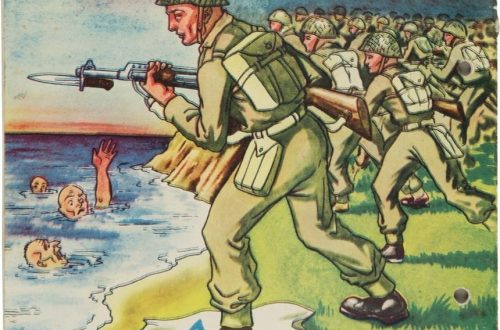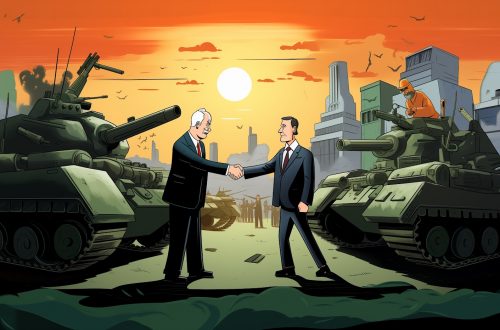Here is a police officer’s account of his experience policing the STWC’s Gaza March:
As usual we had been told that our role was to facilitate the lawful demonstration and that we were effectively ‘community Policing’ unless the situation changed and things became violent. Crucially, we were told that despite the fact that nearly every march relating to the Gaza/Israel situation had experienced violence, this was not sufficient evidence to suggest that THIS march would become violent. As such, because the senior officers are so afraid of offending the wrong people, we were NOT in possession of riot helmets or shields which were left on the carriers, although we all were in our protective gear and coveralls under the yellow jackets. We were wearing our normal everyday beat helmets and to say some were not happy about that would be a slight understatement.
…
We carried on down towards the front entrance to the Embassy and our end stayed pretty much the same. All of a sudden we heard calls from one of our other serials that dozens of people tried to break through the gates to get to the embassy and were climbing the fencing, throwing anything to hand, throwing burning flags at the gate and that they needed more units to help out. Within seconds we heard the call that no police officer wants to hear “more units now, urgent assistance, we’re under attack, officer down”
What had started as a several dozen turned into a hundred or so and the officers were being attacked with missiles including glass bottles, balloons filled with paint, scaffolding clips and metal poles, and a couple had been dragged into the crowd and were beaten to the floor. One officer was knocked unconscious by a scaffolding pole, two received really bad facial injuries and the other officers (male and female) were kicked and punched repeatedly until a couple of PSU’s managed to get to them. At the time we were not allowed to wear our protective helmets and were still marching towards the Embassy.
…
We got back to our posts near the front of the march to be told that a couple of shops opposite the embassy had been attacked and ransacked and that protestors had been seen stealing bottles and knives which were distributed through the crowd and subsequently thrown at the officers at the front gate. We were then informed by a serial at the gate that they had had several bottles of accelerant thrown at them which failed to ignite. At that point PSU’s were brought in to contain the crowd which did effectively block them in, the hope being that they would dissipate out the other end. The confrontation became even more violent, demonstrators destroyed the fencing that was keeping the pavements clear for the shops and emergency evac units, and some of the fencing was used as a barricade to stop the Police PSU’s from getting into the crowd to arrest people, specifically those from last weeks demo who had been recognised by the intelligence teams.
We then used filter cordons to try and dissipate the crowds to get the vast majority of people out of the area, this consists of a couple of ranks of officers with people still able to pass through. The people responsible for destroying the shops and throwing the missiles/accelerants were still in the crowd outside the embassy so they were contained. When information about the cordons started feeding back into the crowd a number of demonstrators tried to break out and were using anything and everything to attack the officers on the cordons, including the barriers themselves.
As the violence increased, our escalation increased, and for the first time in almost 8 years (in the Met) full deployment of longshield units was authorised, it was probably around 8pm at that point. Short of watercannon, rubber bullets and teargas, this is the highest state of force we can use in a public order situation and the decision to authorise it was not taken lightly, because it is so obviously aggressive.
Over the next several hours we had to use more cordons to force back crowds that had gathered on all sides to dissipate them as some (but not all by a long shot as there were a lot of normal demonstrators mixed in with them) of the group contained in the embassy continued attacking officers, vehicles, property, horses etc. We kept the cordons in as the protestors were taken out of the embassy cordon section individually where they were videoed for evidential purposes (to check against CCTV later) and searched for any items taken from the stores, they were then allowed to leave. As the number of people in the contained area shrunk we were able to move the cordons in further which released more officers to assist in searching so the whole group could dissipate quicker. Our cordons and teams were eventually taken down around half ten, having been in place from around four when it first started kicking off outside the embassy.
Then, by way of contrast, there is “FITWatch“. FITWatch describe themselves as:
“a fluid group of people who have come together to resist and oppose the tactics of the Forward Intelligence Teams (cops who harass protesters). We aim to act in solidarity with each other, supporting campaigns by being at meetings and protests, making it harder for the police to film and gather intelligence.”
And this is how they see it:
It is very easy to see violence at protests as perpetrated by “known troublemakers”, the “violent minority” or “rent-a-mob”. However this is a patronising oversimplification and is a very convenient way of dismissing caring, passionate people, especially as notoriously these people do not have a voice for fear of repercussions.
Political policing in this country is forcing people into militancy. Large protests have been ignored and smaller protests have been persecuted.
Fitwatch is a small but important part of this resistance. It is part of the same response, the same refusal to be constantly pushed around.


